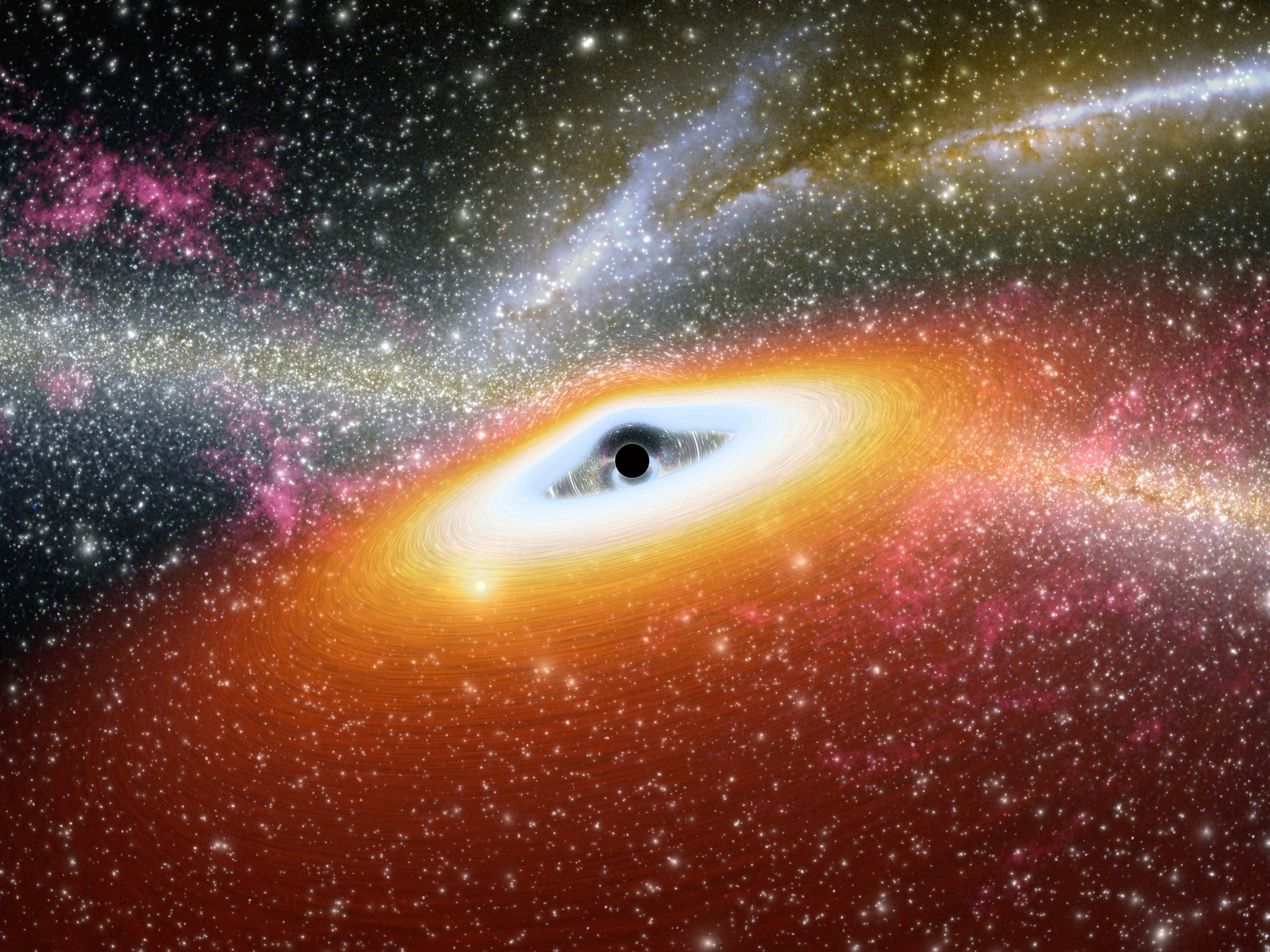
For something that is in some ways nothing, black holes sure get a lot of attention. The infinitely dense remains of collapsed stars, black holes exert a gravitational force so powerful that nothing—not matter, not light or any other energy—can escape from them. They are therefore entirely undetectable, except in terms of the effect they have on the things around them.
Now, a pair of papers—one published by a team of investigators from China and another by a team from NASA—have discovered a new feature of all black holes: They can burp. Sort of. OK, let’s back up.
Black holes are ravenous things, pulling in dust, gas and entire stars that stray too close to their event horizon—the gravitational point of no return. The hunt for anything that can escape a black hole’s pull—falling inside and somehow popping back out—has been futile, with the single exception of Hawking radiation, discovered by, well, you-know-who, in 1974. At the event horizon of a black hole, Stephen Hawking concluded, twinned pairs of particles and antiparticles swirl about in much the way they do elsewhere in the universe. But as a result of some complicated quantum hocus pocus, when one of the particles falls in, the other stays out, producing dim but detectable radiation.
That is really all that’s ever been shown to get free of a black hole, until just a few days ago that is, when the Internet exploded with the news that after a black hole eats a star, it burps back out a bright flare of light. The reports are entirely true as far as they go—but that’s not as far as it seems.
The two papers were based on readings from the WISE satellite (Wide-field Infrared Survey Explorer), a NASA probe that conducts full-sweep readings of the bowl of the sky once every six months. WISE, as its name makes clear, works not in visible light but in the infrared, which reveals a lot of information that optical telescopes can never detect.
The researchers in the new studies looked at stars spiraling toward the black hole drain at the point at which they reach the so-called Roche limit, when the gravity of a body that is being orbited rips the body that is doing the orbiting apart. In the case of, say, an ordinary moon orbiting an ordinary planet, that results in the moon being reduced to a swarm of asteroids and other debris that eventually rain down as meteors. In the case of a black hole, the result is “spaghettification” of the star, which is just what it sounds like—an annihilation that takes the form of the star being torn into long stands before being swallowed up.
As spaghettification happens, it leads to what the researchers describe as a “sudden injection of gas close to the black hole horizon.” That is an injection toward the hole from the star, not the other way around. The injection leads to brilliant flares of light—still far away enough from the hole that they can escape. The light is then absorbed by dust particles a few trillion miles from the black hole, which re-emit the energy in the infrared.
That’s what WISE saw: not energy or matter that truly fell across the event horizon and was burped back out, but energy and matter that never fell in in the first place.
Still, such a near-miss finding is important. It’s exceedingly difficult for optical telescopes to see details of objects within a single parsec (3.26 light years) of the black hole at the center of galaxies. That’s because of both the enormous concentration of stars and other bodies in that region and because even the best optical telescopes simply don’t have sufficient resolution. The WISE findings get astronomers within 0.1 parsec, revealing new insights into both the amount of energy that is released when a star is destroyed and the mechanics of black hole behavior as a whole.
Unless physics as we know it is someday stood on its head, it remains a scientific certainty that we will never see, optically, a black hole. And we surely won’t visit one and survive to describe what we’ve seen. Even if the unbreakability of the black holes’ hold remains unchanged, however, the mysterious bodies do occasionally whisper a few of their secrets.
More Must-Reads from TIME
- Donald Trump Is TIME's 2024 Person of the Year
- Why We Chose Trump as Person of the Year
- Is Intermittent Fasting Good or Bad for You?
- The 100 Must-Read Books of 2024
- The 20 Best Christmas TV Episodes
- Column: If Optimism Feels Ridiculous Now, Try Hope
- The Future of Climate Action Is Trade Policy
- Merle Bombardieri Is Helping People Make the Baby Decision
Write to Jeffrey Kluger at jeffrey.kluger@time.com